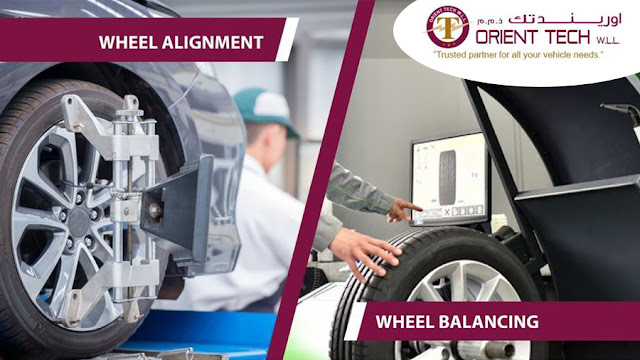Tire Care and Maintenance
Tire care and maintenance: this is how you ensure a long life for your tires
The most important basic rules of tire care
Of course, tires don't last forever. At the latest when the tread depth falls below the permissible minimum or there is irreparable damage, a new tire must be found. The service life of the tires can, however, be extended through conscious tire care and regular maintenance. This also has a beneficial effect on fuel consumption and the environment.
Keep the air pressure constant
This is actually well known, but many motorists still underestimate the importance of this measure. Too low an air pressure not only leads to greater wear and tear and sometimes even to irreparable damage; it also increases the braking distance, makes it difficult to steer in a curve and increases rolling resistance, which ultimately also has an impact on fuel consumption. In extreme cases, the tire can overheat and the tread can become detached. If you do not have a built-in tire pressure monitoring system, you should remember to check the tire pressure regularly: ideally every 14 days and before long journeys.
Regular checks are part of tire care
The tires are usually checked by a specialist when summer and winter tires are changed. But it can be advisable to drop by the workshop every now and then, especially if you are on the road a lot. Tires can often have defects that cannot be seen with the naked eye and cannot be repaired yourself, and which accelerate wear and tear over time. This includes:
Imbalances: In the technical sense, one speaks of an imbalance when the axis of rotation of a rotating body does not correspond to the main carrier axis of this body, i.e. that is, the rotation around the axis of the wheel is not perfect. This is usually due to the fact that the tire's mass distribution is not completely even. An imbalance can be noticed by a slight tremor in the steering wheel. In the workshop, the tires are tested for imbalances and to correct them, the tire is balanced, usually using small weights that are attached to the wheel. Therefore a proper Wheel Balancing is required.
Bad tracking: the tires on the front and rear axles must roll exactly at right angles to the road surface and parallel to the longitudinal axis of the car when loaded. If the wheel alignment is poor, this ratio is not correct, which leads to increased and irregular tire wear. The track adjustment can also be carried out in the car workshop without any problems.
The driving style
When it comes to driving, the surface on which the car is driven plays a decisive role. We know that city trips (with frequent acceleration and braking) put more stress on the car than long journeys on country roads and journeys on bad, bumpy roads or even dirt roads more than journeys on roads in perfect condition. You can't always choose which roads you are traveling on, but some things are already in the power of the driver. The tire suffers more at speeds over 130 km / h, when braking and accelerating sharply and when driving over curbs (if absolutely necessary, you should drive over them as slowly and at right angles as possible). Overloading the car should also be avoided.


Comments
Post a Comment